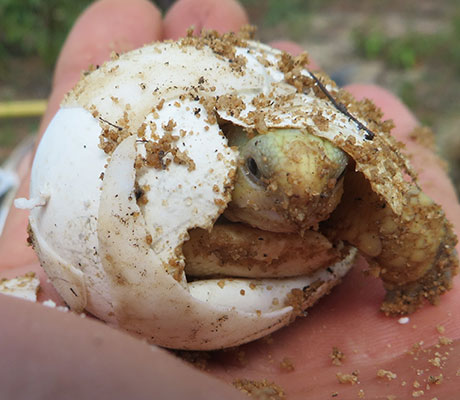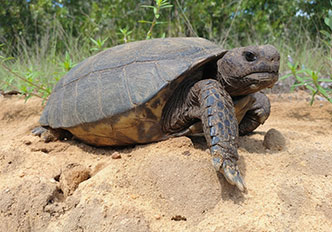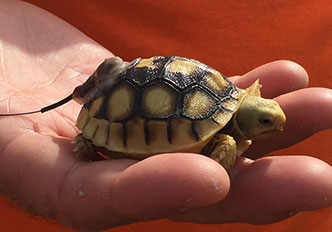Gopher Tortoise
Managed Recovery

The gopher tortoise (Gopherus polyphemus) is a large, long-lived, terrestrial tortoise native to the southeastern United States. This tortoise is found from eastern Louisiana to Florida, and north to the southern portion of South Carolina where it reaches the northern extent of its range. The gopher tortoise is considered a keystone species, as it constructs extensive underground burrows, that may exceed 25ft in length, and provide shelter to hundreds of other species. Habitat loss and degradation are the primary causes of gopher tortoise declines. The tortoise is federally listed as threatened in the western portion of its range and as a candidate species in the reminder. This recent consideration for protection in the eastern range has led to an increased focus on the implementation of proactive conservation measures to help preclude the need to list this species.
SCDNR has focused on the conservation of the gopher tortoise and has implemented a number of efforts to better understand the biology, reproduction, distribution, and habitat requirements of tortoises in the state. Since the mid 2000’s we have implemented efforts to effectively manage habitat and populations at the two heritage preserves on which tortoises occur, to work with public and private landowners to identify extant tortoise populations, and to compare habitat use and densities of tortoises in areas of different habitat management.
In 2005, SCDNR began a unique project in collaboration with the Savannah River Ecology Lab to recover and enhance the tortoise population at the Aiken Gopher Tortoise Heritage Preserve, home to the northernmost known population of gopher tortoises. At this location, waif tortoises (those removed from the wild and from unknown origin) have been reintroduced to the landscape in order to establish a viable population at the preserve. Currently, we are engaged in efforts to better understand the survivorship of hatchling tortoises, the evaluation of head-starting of hatchlings tortoise to increase survivorship, and to examine the long-term site fidelity of the released gopher tortoises. Information from these efforts can be utilized to establish additional populations to aid in conservation. To date more than 300 tortoises have been release on site and we are well on the way to meeting viable population criteria.

Gopher tortoise (Gopherus polyphemus)

Scoping a gopher tortoise burrow

Hatchling with transmitter
Additional Information
- SCDNR, Riverbanks Zoo partner for gopher tortoise research
- Turtles of South Carolina and Georgia
- Gopher Tortoise SWAP information (PDF)
